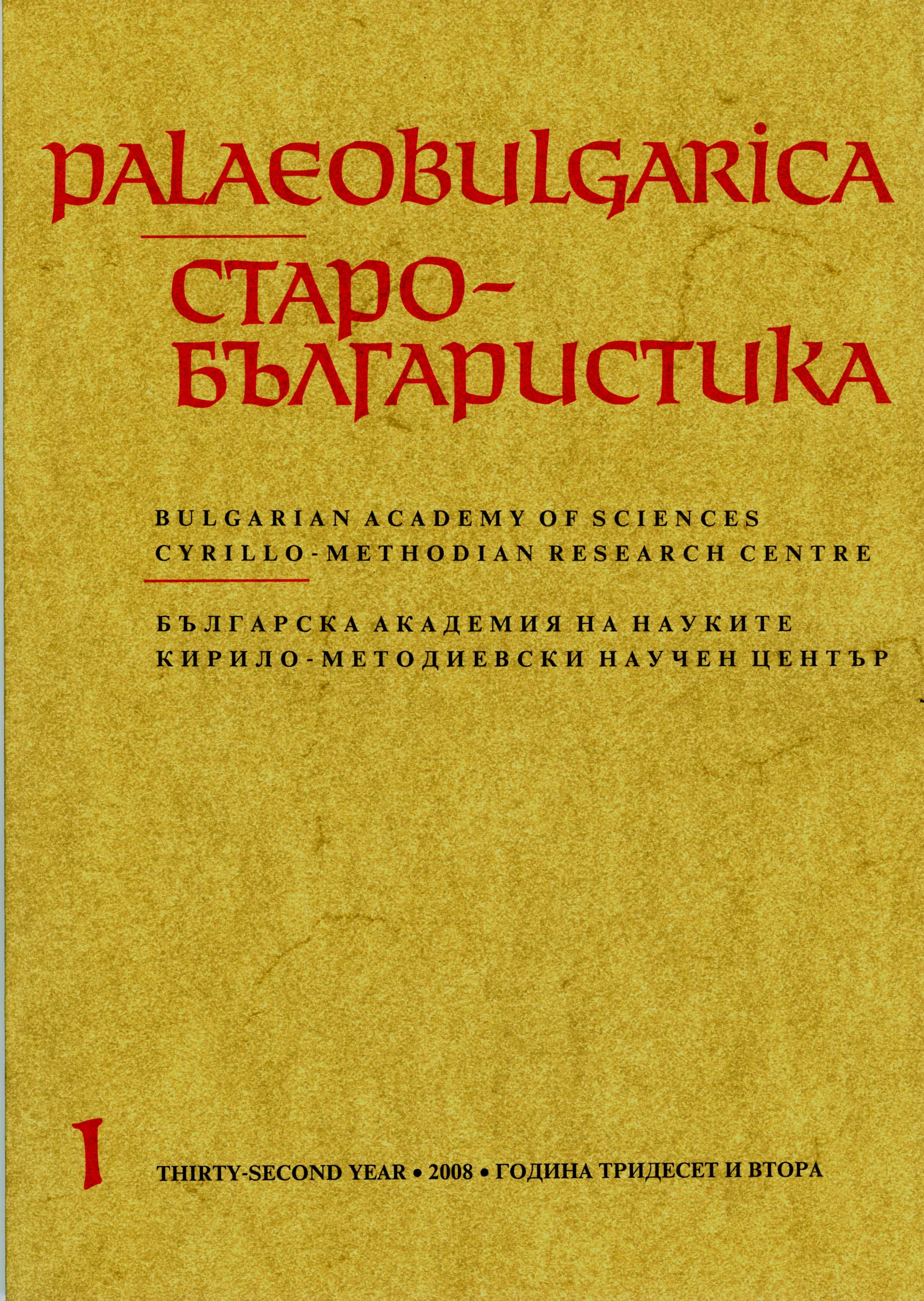Наблюдения върху синтаксиса на старобългарската епиграфика (X–XI век)
Notes on the Syntax of Old Bulgarian Inscriptions (10th–11th Century)
Author(s): Ivan N. PetrovSubject(s): Language and Literature Studies
Published by: Кирило-Методиевски научен център при Българска академия на науките
Summary/Abstract: The paper concentrates on certain problems of Old Bulgarian syntax; the observations presented, concerning the Cyrillic epigraphy of the 10th and 11th centuries, are meant to supplement a broader study of complex sentences and their transformations (functional equivalents) in the development of the Bulgarian language. The aim of the research was to analyse the possibilities of expressing certain semantic categories inherent in the language system at various stages of its history. In the course of its development, Bulgarian has introduced numerous significant innovations as regards complex syntactic structures. Bearing in mind the many changes and the general diversity in the field, a particular kind of syntactic entities was chosen as the primary object of the research — namely, the so-called polypredicative structures, i.e. sentences containing in their deep structure two independent predicative units joined together by a given semantic relation: temporal, causal, consecutive, final, conditional, concessive etc. The results obtained from the analysis of polypredicative structures in the syntax of Old Bulgarian inscriptions were compared with corresponding data from the Codex Suprasliensis (11th c.). Research on Old Bulgarian inscriptions (especially on the syntactic level) can only be confined to simple observation and description — any attempt at general conclusions must be considered risky due to the peculiarity of the source material. The situation is especially difficult as far as syntax is concerned, since the attestation of full sentences, expressing complex semantic relations, is extremely poor. Nevertheless, conducting such an analysis was deemed necessary and significant in the light of the uniqueness of the ‘genre’ in question: inscriptions frequently reveal elements of the natural spoken language used at the time when they were written. These features may be said to reflect the processes that took place in the spoken language of a whole period. The conclusions of the study are as follows: 1) the syntax of the Old Bulgarian inscriptions shows a remarkable diversity in terms of form, despite the scarce material available; in fact, all the syntactic forms typically found in the Old Bulgarian manuscript corpus (complex sentences, participial phrases, nominalisations) occur in the epigraphs as well, except for subordinate clauses expressing causal, purpose and temporal relations; 2) nominalisations involving deverbal nouns, characteristic of the later stages in the development of the Bulgarian language, appear in the analysed sentences only sporadically (representing various relation types); 3) the multifunctional conjunction ¸ is widely used; in the excerpted material, however, it serves primarily to denote the temporal (sometimes consecutive) relation; 4) as in the later periods, the conditional and concessive relation is expressed by complex sentences containing specialised conjunctions; as far as the analysed material is concerned, nominalisation processes are not typical of these relation types.
Journal: PALAEOBULGARICA / СТАРОБЪЛГАРИСТИКА
- Issue Year: 2008
- Issue No: 1
- Page Range: 36-46
- Page Count: 11
- Language: Bulgarian
- Content File-PDF

